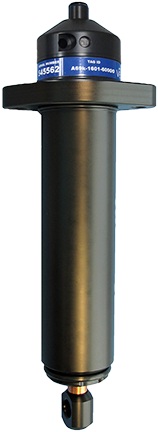VR2AR-X Long Life Acoustic Release Receiver
-
Overview
VEMCO’s VR2AR-X receiver is the same as our VR2AR receiver with a built-in transmitter and acoustic release but with a much longer life – up to 26 months.
Note that the latest release of VUE software (version 2.4.0), is required to communicate with the VR2AR-X. Also when using transponding capabilities between the VR100 and the VR2AR-X, the latest version of the VR100 firmware and host software (version 3.5.0) must be installed.
-
Gallery

-
Frequently Asked Questions
How much detection range can I expect?
How long will my VR2AR-X battery last?
Does transceiver orientation matter?
How do I deploy my VR2AR-X transceivers?
Can my VR2AR-X measure noise in a specific location?
How much detection range can I expect?
Detection range depends on so many factors that it is difficult to estimate without knowledge of the environment and prior experience with telemetry. Range depends on transmission power, signal absorption, line of sight, reflection/refraction, multipath and environmental noise (man-made & natural), and the receiving quality of the receiver/hydrophone. Typically areas that have clear water, sand or silt flat bottoms and low current exhibit the greatest ranges. Conversely, areas with turbid water, complex rocky bottom topography and high current exhibit low ranges. In all cases, extreme weather events and periods of high wind (waves) may significantly reduce range.
In most cases greater transmission power output (dB) results in greater range. For example, in good conditions a V7-VR2AR-X range test could yield a range of 300-400 m and a V16-VR2AR-X test could yield ranges of 800-1200 m. There are some exceptions where high power and a reflective and low noise environment may cause detection breakdowns.
Please try our Range Calculator but only use the results as a guide. One should always perform range testing to determine appropriate receiver spacing. For the enthusiast who wants to learn more about sound propagation, try the widely accepted reference on underwater sound by Urick (1983). (Urick, Robert J. Principles of Underwater Sound, 3rd Edition. New York. McGraw-Hill, 1983.).
How long will my VR2AR-X battery last?
The VR2AR-X transceiver will typically last 26 months on a single DD-cell Tadiran lithium battery. An estimation of the remaining battery life is available when acoustically communicating with the VR2AR-X through the VR100-200. TIP: Write the installation date on the battery so you know how long the battery has been in use.
The AA Lithium battery only powers the release motor and should never need to be removed or disconnected from the VR2AR-X. It will last 100+ releases under load. The remaining battery life can be monitored using the VR100.
Does transceiver orientation matter?
The VR2AR-X must be orientated with the hydrophone looking upwards for communication with the VR100-200. Also, transceivers are commonly moored closer to the seafloor than the surface to minimize the effect of surface noise and conditions.
How do I deploy my VR2AR-X transceivers?
Tips on how to deploy your VR2AR-X transceiver can be found in the VR2AR Deployment Tips Guide and in Section 4 of the VR2AR / VR2AR-X User Manual.
Can my VR2AR-X measure noise in a specific location?
Yes. VEMCO’s VR2AR-X receiver has the ability to record average noise levels as well as min/max noise levels for a specified time period. If noise logging reveals that a deployment location may be unsuitable, then a comparison of noise levels at other deployment locations can be performed, and the least noisy location can be chosen. Also, the VR100-200 surface unit with a VHTx (Transponding Hydrophone) can be used to request and display noise measurements without having to retrieve your receiver. For more information, see the VR2AR & VR2Tx Receiver Noise Measurement Guide.
-
Specifications
Specifications Dimensions Length: 465 mm, 405 mm without release lug
Diameter: 81 mm
Mooring bracket width: 170 mmWeight 2746 g in air, 812 g in water Power supply 1 – 3.6 V Lithium DD cell battery (Rx)
1 – 4V Lithium AA cell battery (AR)Battery life Approximately 26 months Maximum depth 500 metres Receive frequency 69 kHz standard Storage Approximately 1.6-million detections (16 MBytes non-volatile flash memory) Communication Acoustic via VR100 and Bluetooth® Attachment 3 – 14 mm mooring holes (2 in mooring bracket, 1 in release lug) Firmware Field upgradable receiver firmware Software VEMCO user Environment (VUE) software Transmitters Logs and decodes ALL Vemco 69 kHz transmitters Code maps Support for all current and planned Vemco code maps Max test load 1000 lbs Max safe working load 250 lbs Max release load 250 lbs -
Downloads
